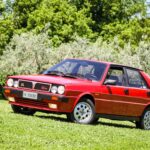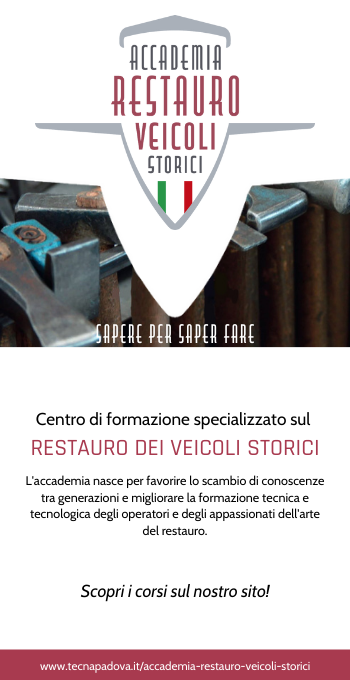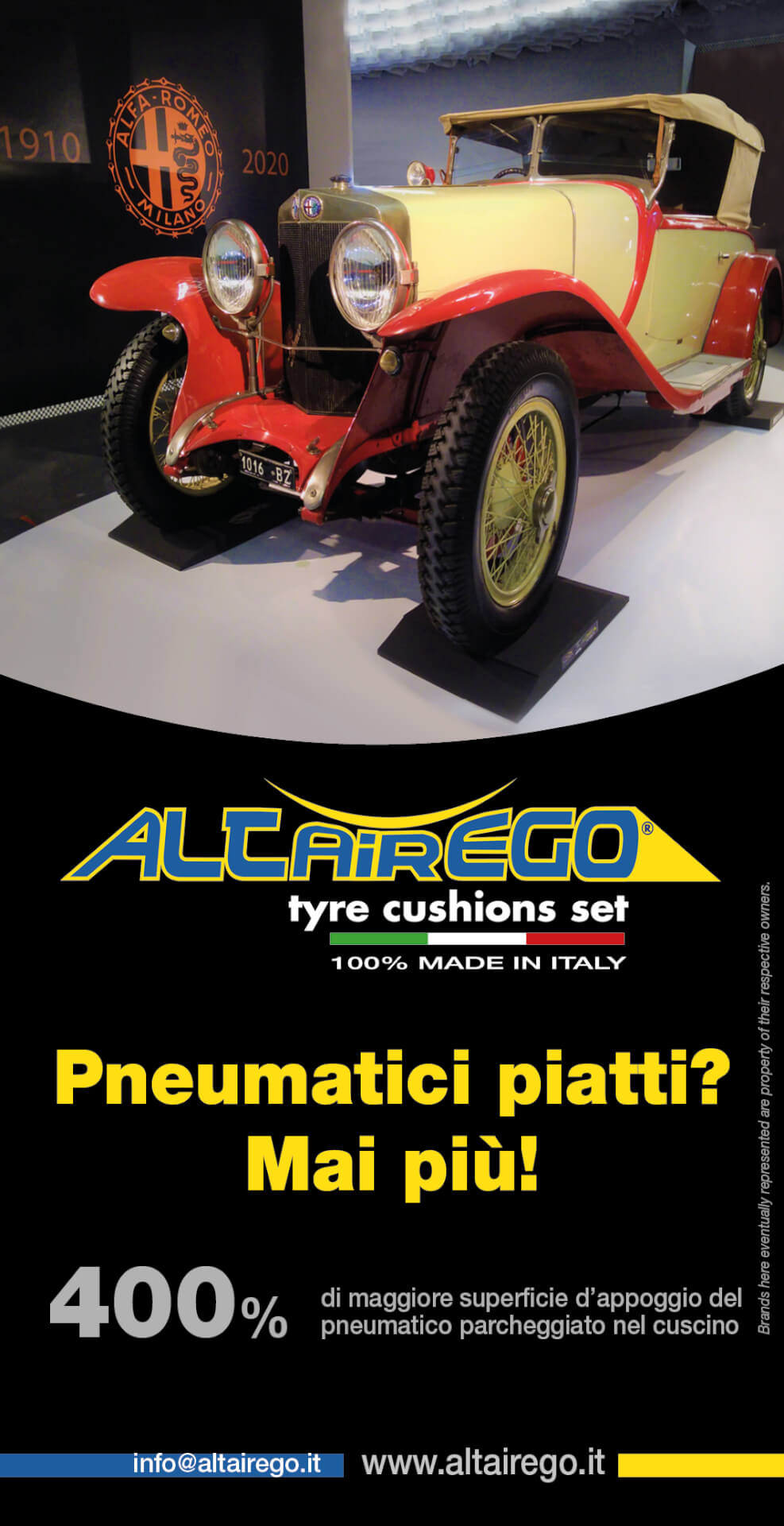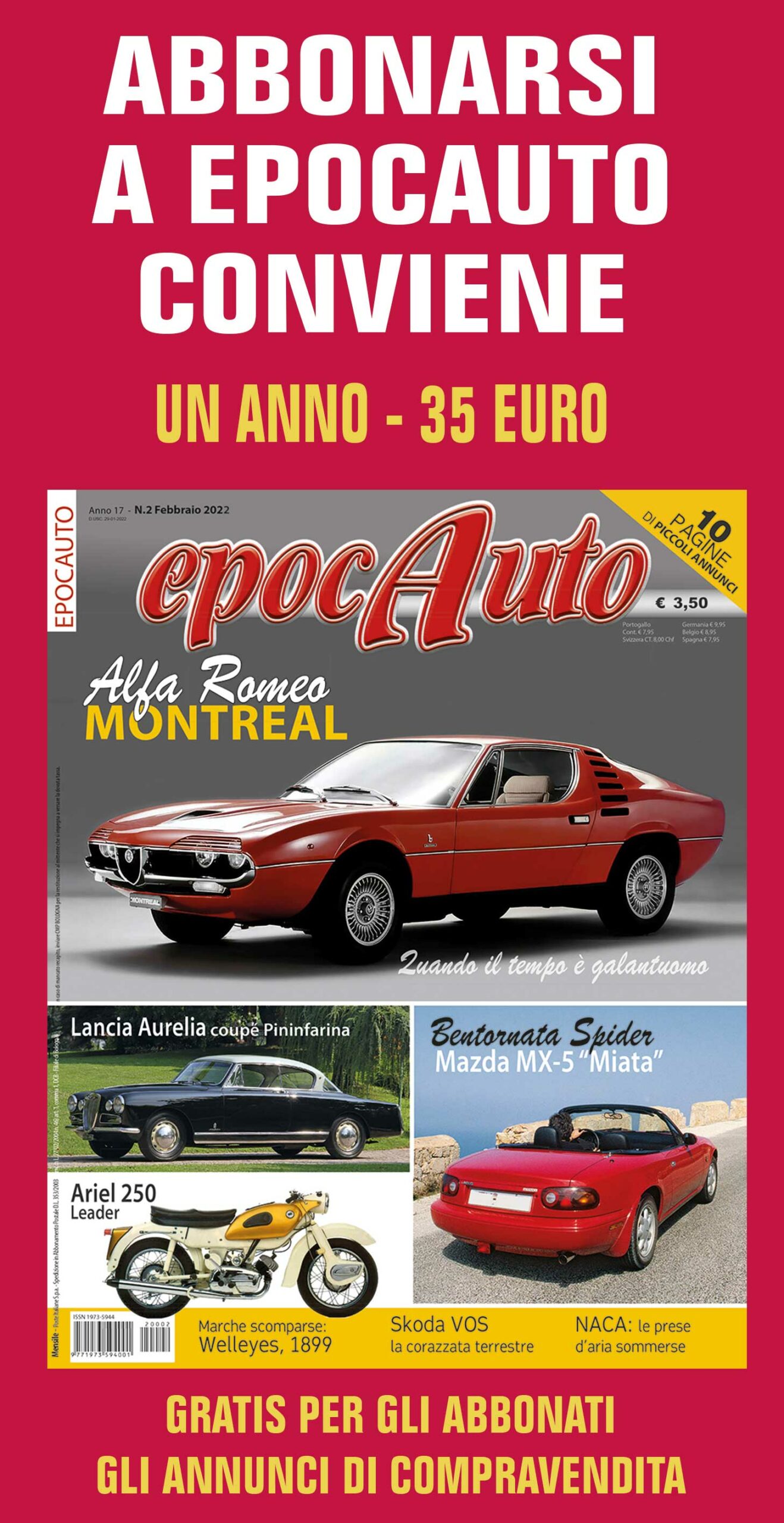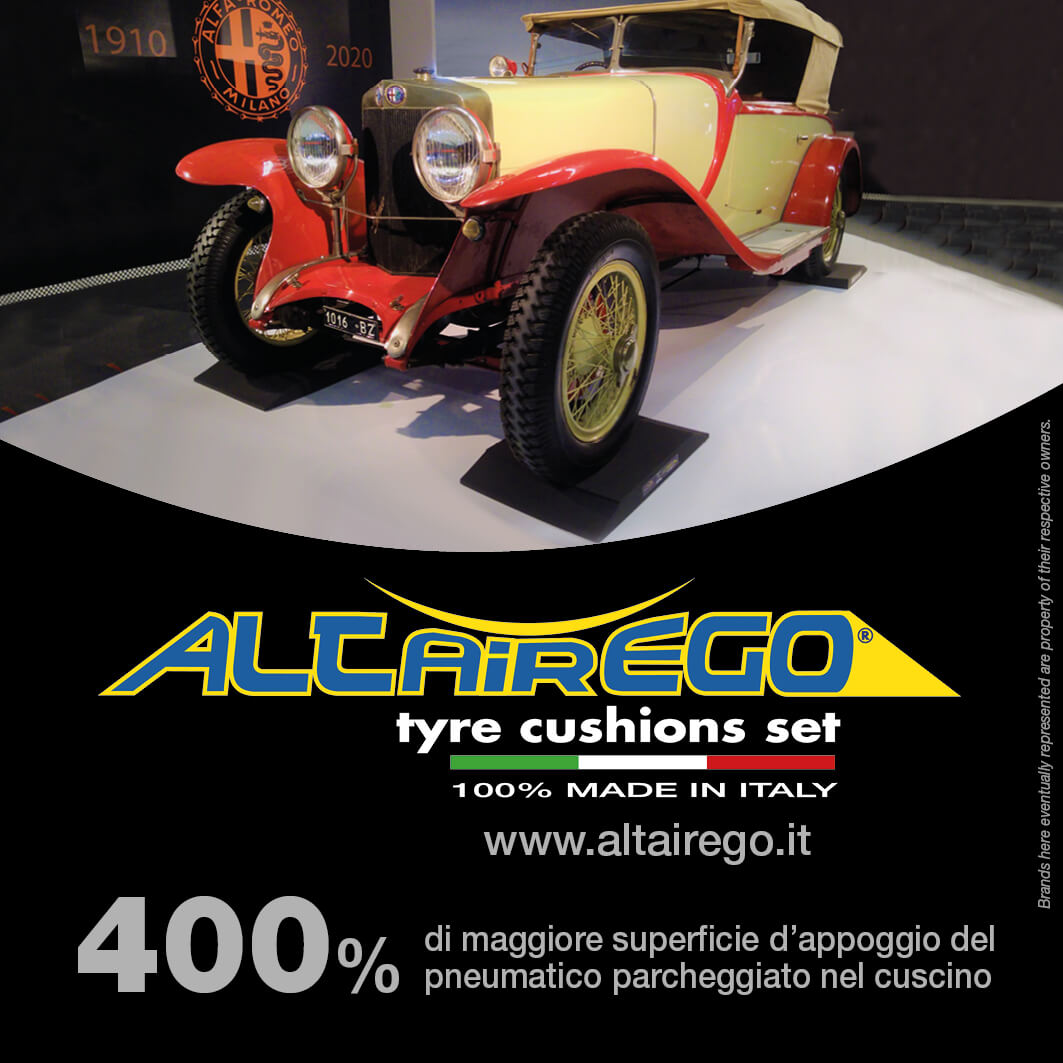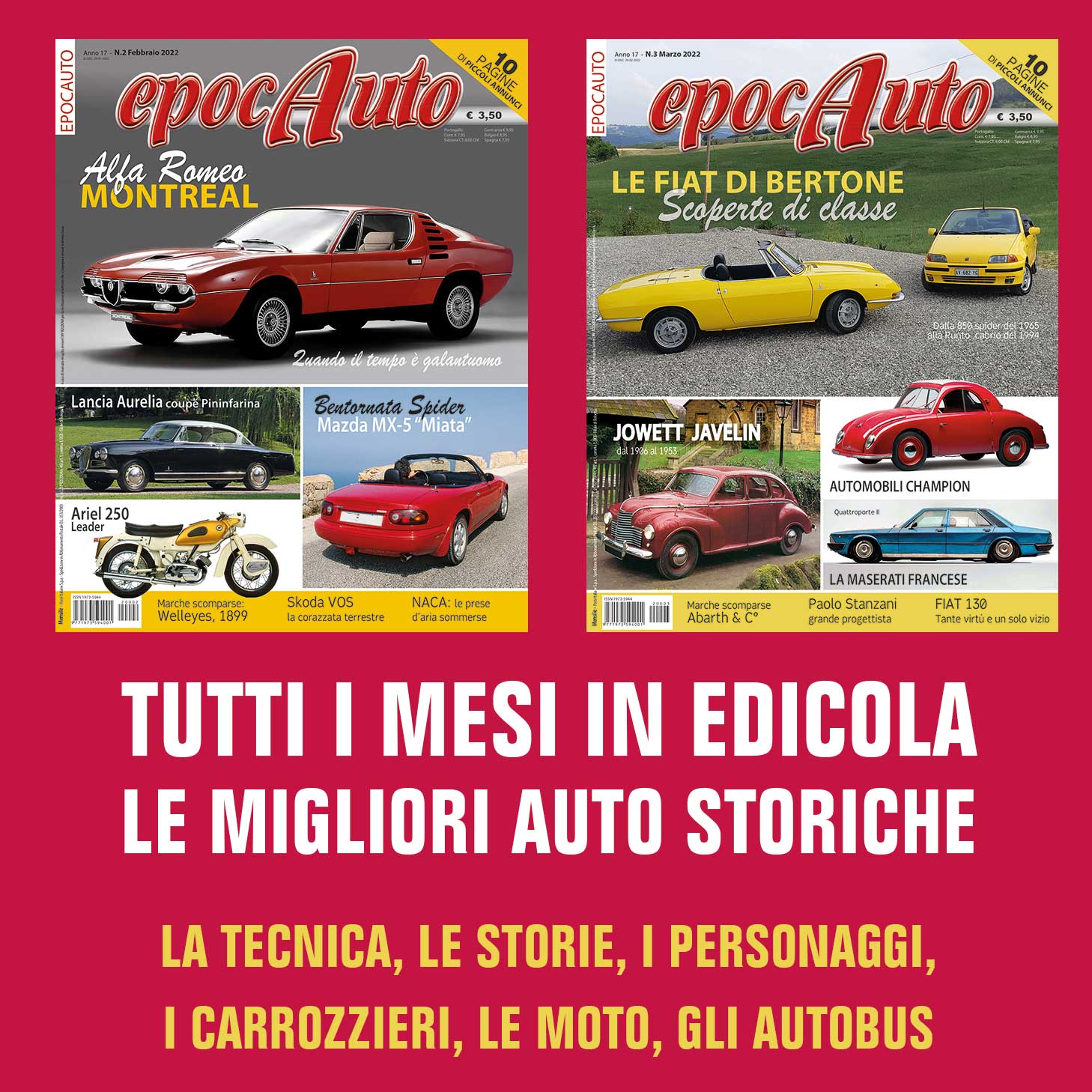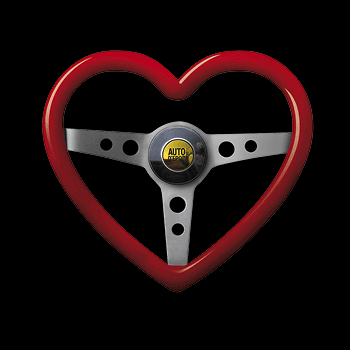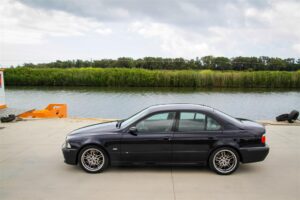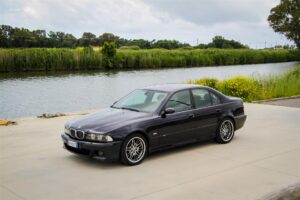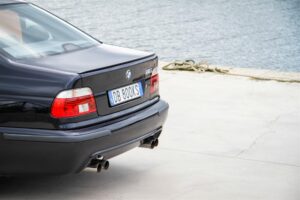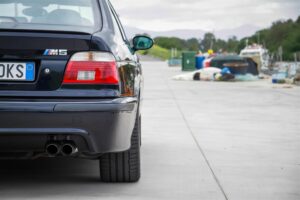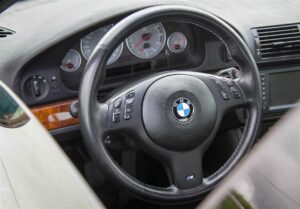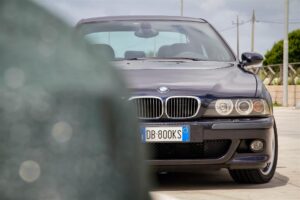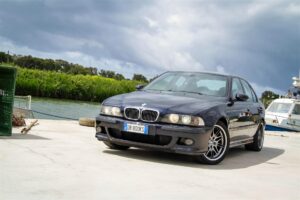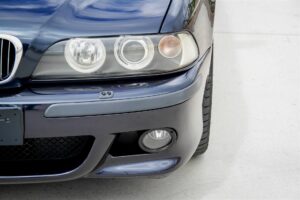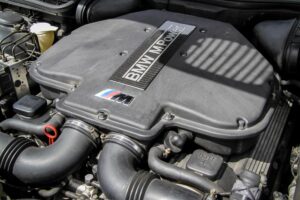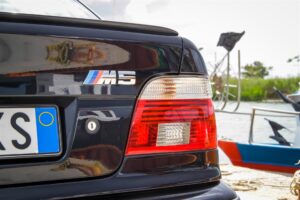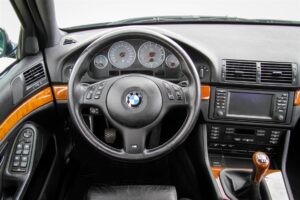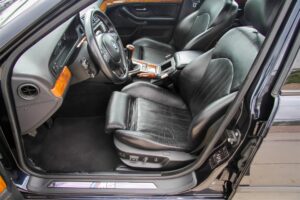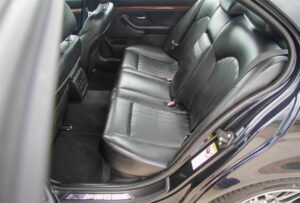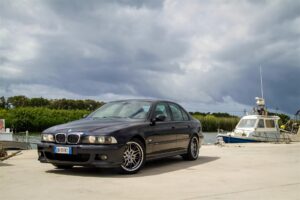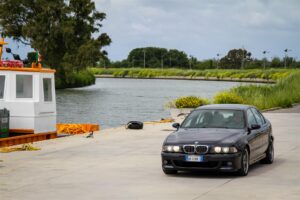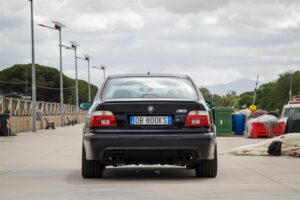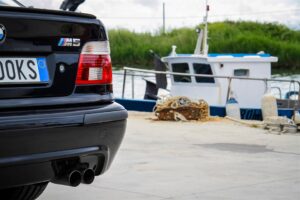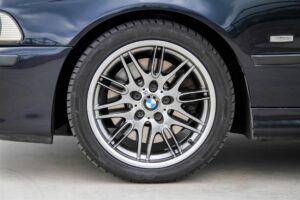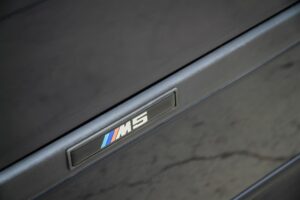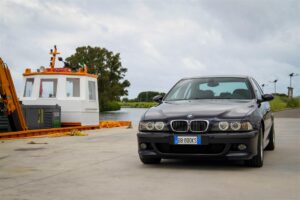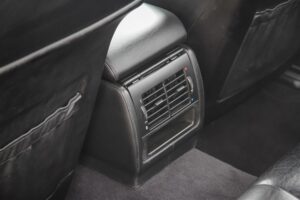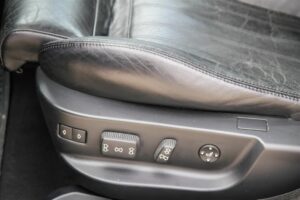Magazine Agorauto
BMW M5, Power and understatement
Author: Michele Di Mauro · Credits Ph: Michele Di Mauro
5 April 2022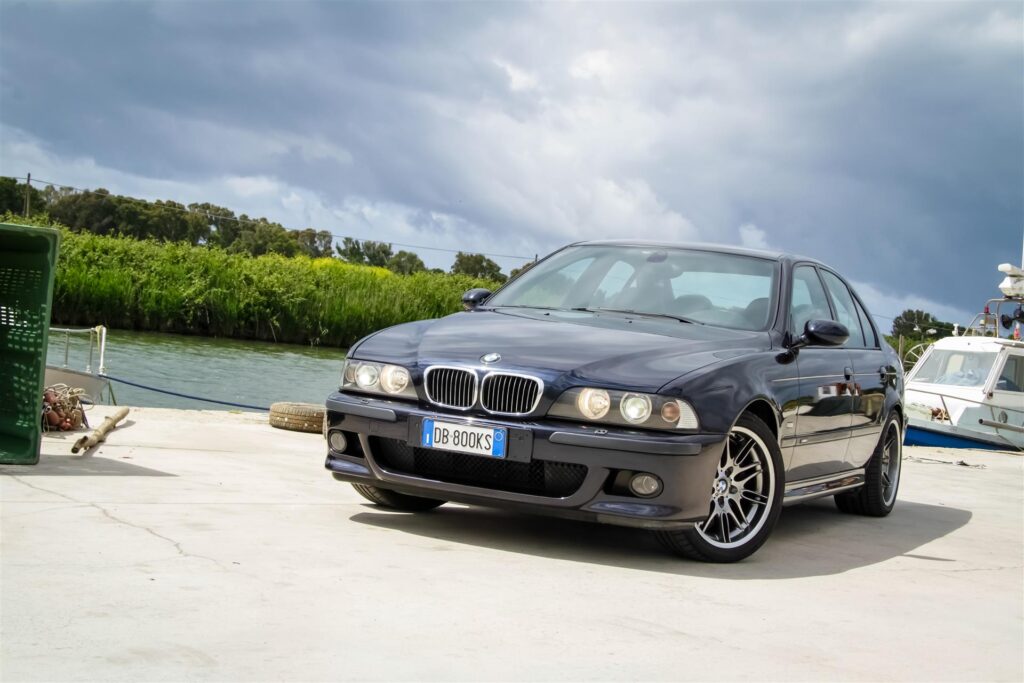
The era of the four-door sporting sedan segment began in the 1960s. Italy led the way, as so often in the past, with full-blooded cars including flagships such as the Maserati Quattroporte or the ISO Rivolta Fidia, or more compact models such as the Alfa Romeo Giulia TI Super, the spiritual heir to the 1900 and Giulietta, the race-winning family sedans.
In the rest of Europe, in the mid-70s Germany focused on offering extreme versions of derived from production sedans, and things were generally rather quiet. When Mercedes-Benz began to work with AMG, their perpetual rival BMW turned to its internal sports car department, Motorsport. In 1979, they unveiled the M535i at the Frankfurt Motor Show, a 5 Series E12 powered by the 3.5 litres, 6 cylinder fuel-injected engine producing 218 horsepower from the larger 635i and 735i. Although only a few examples were produced (1410, plus another 240 assembled in South Africa) and despite the fact that it was not a proper M5, the M535i was the car that sowed the seeds which gave rise to a highly successful genealogy.
The first “real” M5 only made its debut in 1984, at the Amsterdam Motor Show. It joined the M535i, compared to which it distinguished itself with its very sober appearance, while on the other hand, it also combined decidedly more high-performance mechanicals, namely that of the M635Csi, with a 24-valve, 286 horsepower and 340 N/m engine with multipoint electronic fuel injection, a self-locking differential, and a four-disc brake system with ABS. It was a wolf in sheep’s clothing, capable of reaching 245 km/h and sprinting from 0 to 100 km/h in 6.5 seconds. It was also an unusual product, different and initially quite misunderstood, so much so that it suffered from internal competition with the M535i which, thanks to its greater aesthetic characteristics and lower cost, achieved significantly higher sales.
It was only with the next version, unveiled at the Paris Salon in 1988, that the M5 became an authentic cult model. Built using the new 5 Series E34 as a base, it was fitted with a 3.5 litre engine with 4 valves per cylinder and 315 horsepower. This time, although its aesthetics remained restrained, they opted for features which made this top-of-the-range version quite unmistakable: special 17” rims, sports suspension, redesigned bumpers complete with spoilers and air intakes. Standard equipment was at the top of the class, as was its performance, with a maximum speed electronically limited to 250 km/h. And for the first time, the M5 was offered both as a sedan and as a station wagon, using the Touring name.
And then 1998 arrived.
Compared to previous models, the M5 was now based on the new, stunning 5 Series E39, continued to tip its hat to sobriety. While not excessive, the new sports car was quite wicked. It remained utterly elegant, albeit demonstrating the muscle and aggression that one might expect from a four-door street racer, but the spec sheet boasted an unprecedented V8, electronic throttle bodies on every cylinder, an aluminium cylinder block and head, variable valve timing with double VANOS system, a semidry crankcase, a 4.950 litre, 4 crankshaft (two per cylinder bank) engine with four valves per cylinder and the beauty of 400 horsepower and 500 Nm. It was a small monster, capable of seeing off various sports sedans with three passengers comfortably seated in the back.
Compared to its “ordinary” sisters, externally, the M5 is wider and lower, featuring bumpers with spoilers and air intakes, marvellous inverted channel alloy wheels and, last but not least, four handsome exhaust pipes in order to immediately remove any doubt. Even on the road, it is quite unapologetic: compared to the previous series, acceleration from 0 to 100 km/h was now 5.3 seconds, while its maximum speed was still self-limited to 250 km/h.
The aluminium McPherson rear suspension and the brand-new multi-link rear suspension with lowered springs, special shock absorbers, thicker anti-roll bars, polyurethane auxiliary springs and steel ball joints literally make this sedan fly like a gran turismo racer. The acceleration is scorching, and stability at high speeds is so good it is dangerous, as it envelops the driver in a muted sense of omnipotence. This effect is accentuated by the fact that, unlike the six-cylinder E39, which is fitted with rack and pinion steering, the M5 retain the recirculating balls system, as for previous generations, boosted with speed-sensitive Servotronic power steering adjustable to two load levels via the Sport button mounted on the dashboard. The same Sport button also acts on the electronic throttles, altering acceleration response.
To rein in these 1800 kg of technology and lust, the car is fitted with “floating” disc brakes – 345 mm at the front and 328 mm at the rear, which respectively lock the 18” rims with 245/40 and 275/35 tyres. Inside, luxury is visible both in the materials as well as in the perceived quality. Leather and poplar wood cover up much of the mechanicals and the electronics, which can be enhanced on request with a radio CD, telephone, satnav and TV.
In September of 2000, the entire E39 range underwent a relatively restrained aesthetic update, which focused mainly on the lights and certain interior details, and which allowed the model to survive until 2003, when it gave way to the controversial E60.
So it was the E60, too big, too different, too powerful (with a 507 horsepower V10), too much everything, which consigned the E39 to history. The E60 was a profoundly different machine, a machine for the new millennium, and made the old M5 the last great BMW sports sedan of the previous century, of the older generation. The last, in short, that you could drive the old way. An automobile which, barely replaced by the new model, instantly became a classic. But why? It is worth trying to understand this by looking at the example which was photographed for Agorauto, where it is also advertised for sale.
This beautiful M5 E39, registered at the end of 2000 and one of the very first restyled units, is stunning in its dark livery, and proof of how its simple, archetypal lines withstand the test of time unscathed. Simple, balanced, proportional, natural lines, where everything is where it should be, in ageless harmony. It has lots of electronics, certainly but not “too much”. And for this reason too, despite having more than one hundred horsepower less than the E60 and being well over twenty years old, this M5 is still a lot of fun and compelling to drive. A classic beauty, to be driven in a classic way.
In short, a spectacle, that you will want in your garage as soon as possible: every day spent thinking about it will be a day of lost enjoyment.
Tags: bmw, BMW E39, BMW M5, BMW Motorsport


